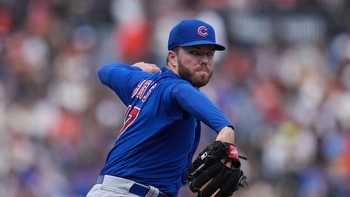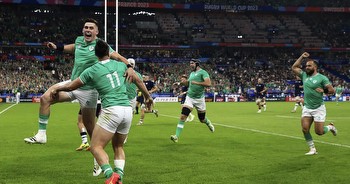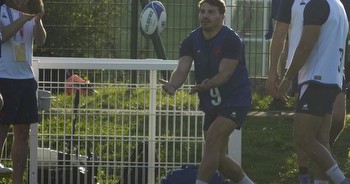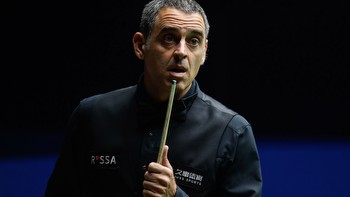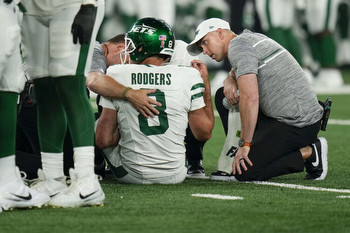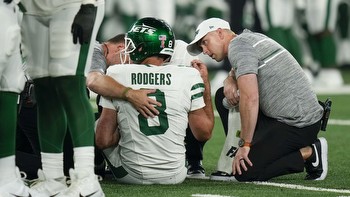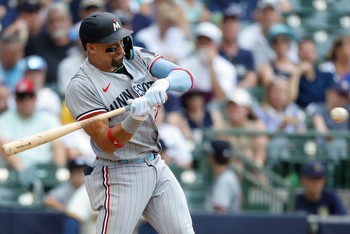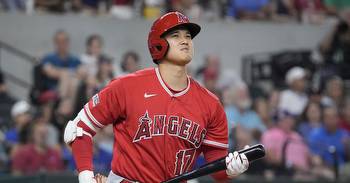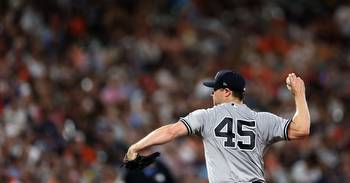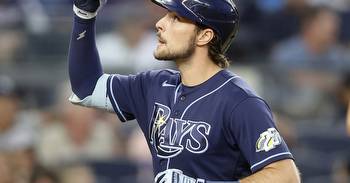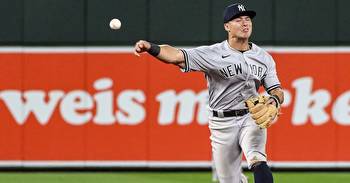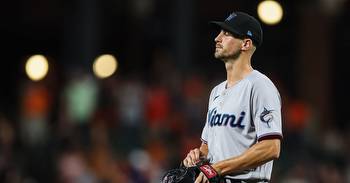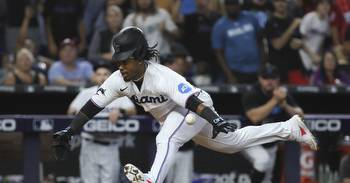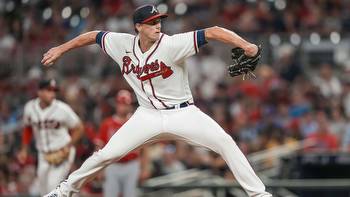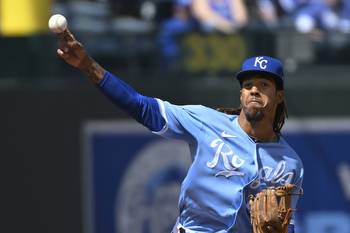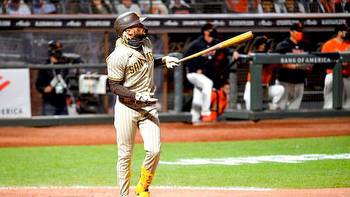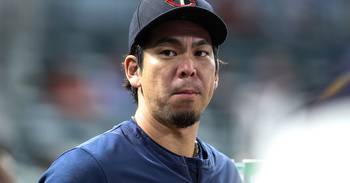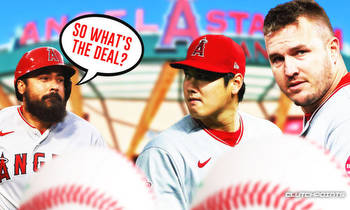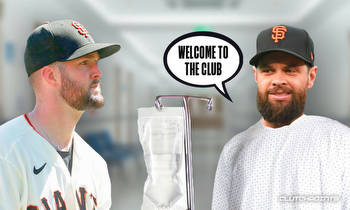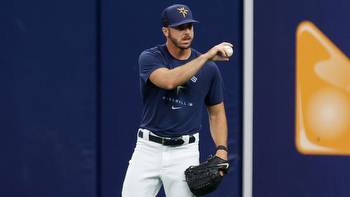MLB injury mailbag: Shane McClanahan optimism, Andrew Painter concern and more
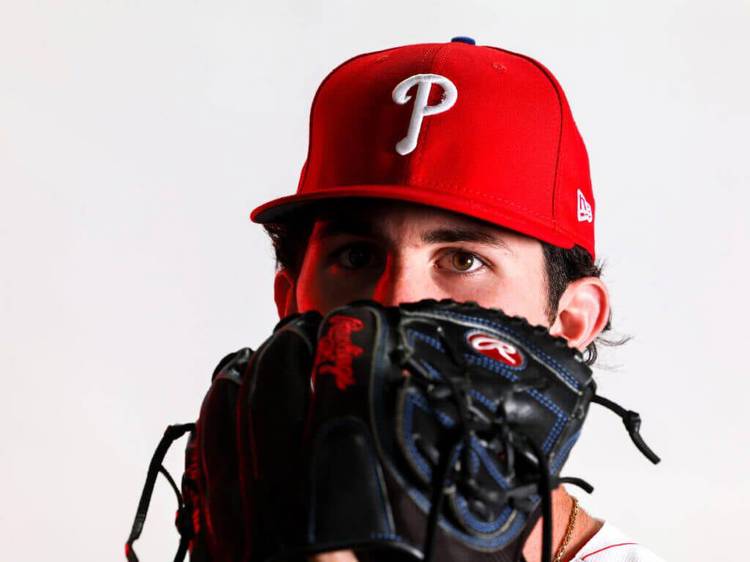
This week, Virginia Zakas of Inside Injuries expresses optimism that Shane McClanahan can return to his ace form, worries about the lack of clarity with Andrew Painter’s elbow issue and more.
But first, here’s a quick glossary of terms commonly used by Inside Injuries:
- IRC = Injury Risk Category (Low, Elevated, High) — the overall likelihood a player will get injured
- HPF = Health Performance Factor (Peak, Above Average, Below Average, Poor) — our metric to predict player performance
- ORT = Optimal Recovery Time — the amount of time a player needs to fully recover from an injury (not the same as how much time they will actually miss
Shane McClanahan was one of the best pitchers in fantasy prior to dealing with a shoulder impingement in late August last season. His ADP appears to be reflecting some consensus concern about that shoulder. Should drafters really worry that an injury suffered six months ago will affect his output in 2023? — Jacob A.
Before left shoulder pain suddenly halted his 2022 campaign, McClanahan had posted a 2.20 ERA and 182 strikeouts in a career high 147.1 innings. He landed on the IL but missed the minimum 10 days, returning in mid-September. In his second start back he was pulled due to left neck tightness and spasms, a different but related problem. McClanahan made his next scheduled start on time but didn’t look quite like the Cy Young candidate who he was for much of the year.
Now McClanahan has had a normal offseason and start to spring training. I don’t see any major concerns going forward, but it is something to monitor if there is ever any signs of arm trouble. For now, McClanahan can still be considered the Rays ace. He is a solid fourth round pick.
How will Anthony Rendon be affected by his injuries this year? — Atul T.
Rendon lasted just 45 games in 2022 before being shut down to undergo right wrist surgery. He was able to return in October, about four months after the surgery. In 2021, he was limited to just 58 games due to a variety of injuries (groin, knee, hamstring, hip). His season ended with right hip surgery to repair an impingement he suffered while rehabbing the left hamstring strain.
As the $245 million third baseman approaches his mid-30s, the injuries are certainly piling up. Rendon is currently nine months removed from wrist surgery and should be as close to full strength as he has been in years, but that doesn’t mean he is going to stay healthy. While the wrist is considered the most serious and most recent injury, the 2021 soft tissue injuries are a bigger red flag going forward. Rendon isn’t someone you should avoid entirely in drafts, but I wouldn’t stretch and draft him inside the Top 200 picks — too much risk and not enough upside.
Andrew Painter has a sore elbow. How is this likely to play out? — Eric K.
Painter reported right elbow tenderness following his spring training start last Wednesday. It’s now a week later and we still don’t have much clarity on the injury. Painter has reportedly been told he will not need surgery, but a lengthy shut-down is expected. At this point, I don’t understand why there hasn’t been some clarity on his exact diagnosis, and it’s a bit concerning. “Elbow tenderness” could be an indication of a wide variety of injuries, ranging from some inflammation in the elbow to UCL damage. He’s likely getting multiple opinions. Typically not a good thing. Because there has been so little info released, I really can’t predict how this will play out. What I am sure of is that Painter is highly unlikely to be ready at the start of the season, and missing at least a month or two is very realistic.
What is the level of concern regarding Kyle Wright’s shoulder? Should fantasy managers be concerned about him being ready for the start of the season? — An B.
Kyle Wright is in a race against the clock to be ready for opening day. He had a normal 2022 season, then in January, Wright received a cortisone injection in his right shoulder. When speaking about the decision, Wright said, “Most of the guys during the offseason have to get over that hump to get going again, I just couldn’t get there. Then once I [got the injection and rested] I was like, ‘Wow, this is how it’s supposed to feel.’” Wright supposedly hasn’t felt quite right at times over the past three seasons. If that’s true, it’s unlikely a cortisone injection will miraculously solve all of his problems, but he’s doing pretty well playing through whatever discomfort he’s had. Wright was a 20-game winner in 2022 to go along with a 3.19 ERA.
Of course, I don’t want to hear that any pitcher is dealing with shoulder pain, but his sounds relatively minor. Wright is unlikely to be ready to go the first week of the season. He shouldn’t be too far behind, though, and is scheduled to throw live BP on Friday. If that goes well, Wright could make his Grapefruit League debut next week. That puts him on track to return in the first few weeks of the season, and an IL stint shouldn’t be necessary. I wouldn’t stretch and take Wright within the first 10 rounds due to his shoulder problem, but he could end up being a solid fantasy starter.
Realistically, how many players come back from two ACL tears? I’m thinking of Royce Lewis and his real chances of a significant career. — Carlo C.
Royce Lewis first tore the ACL in his right knee in February 2021. He missed the entire season, returning in May 2022. Then in June, he re-tore the same ACL. His expected recovery time is around a year, which is pretty standard for MLB players who suffer this injury. The difference here is there really aren’t any players to compare him to. While we do see athletes suffer a second tear to the same knee, the highest risk is within the first nine months, and this isn’t a very common injury across baseball.
When the ACL is damaged, a partial tear is typically treated the same as a full rupture. The old torn ligament is removed and replaced with a new graft, often from the patient’s own hamstring or patellar tendon. Lewis had a slightly different procedure the second time. In addition to replacing the graft (again), doctors “basically, [did] something with the IT band” to “brace” the knee and provide additional support. This shouldn’t have much of an impact on recovery time, and 12 months is a realistic timeline to return. What we don’t know is how Lewis’ body will respond. ACL tears can lead to issues with explosiveness and muscle strength. These things come back for most athletes, but that takes closer to two years. I’m keeping expectations pretty low for the 2023 season. Long-term we just don’t know how his body will respond. Unfortunately, the odds are not in Lewis’ favor to return as the athlete he was before the two knee surgeries. He could go on to have a long and successful career, but living up to the expectations that come with being a former No. 1 pick are unlikely to happen.
Ronald Acuña strained the ACL in his left knee beating out an infield single in 2018 and tore his right ACL on a leaping catch attempt in 2021. How concerned should we be about another ACL injury or lingering effects from the 2021 torn ACL, which hampered him all of last season? — Richard K.
Now almost two years removed from his torn ACL, Acuña’s risk of re-injuring either knee is pretty low. His strained left ACL in 2018 was a very rare injury, as most ACL damage leads to surgery. It didn’t cause any lingering problems. The 2021 injury sidelined him around nine months, which was a fairly quick recovery.
Expectations were unfairly high for Acuña in 2022. In 2023, it’s realistic to see him return to MVP form. I wouldn’t hesitate to use a first-round pick on him.

